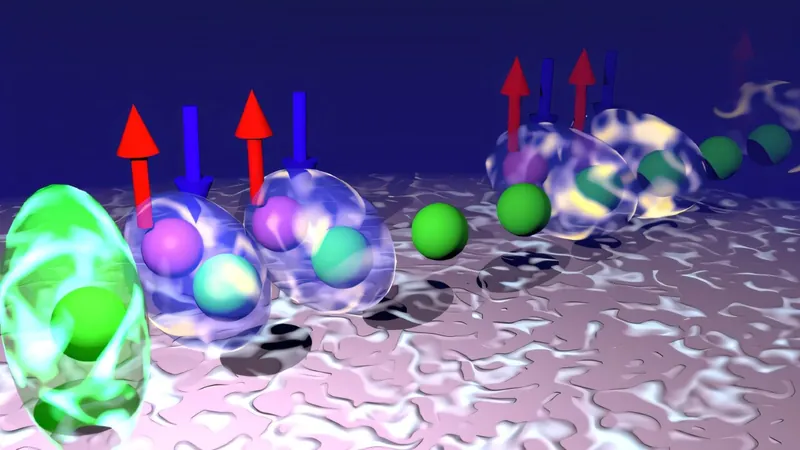
Revolutionary Quantum Material Opens Doors to Supercharged Quantum Computers
2025-06-04
Author: Yu
Quantum Computing's Ultimate Challenge: Stability
Quantum computers have the potential to revolutionize technology, but their journey into our lives is fraught with challenges, particularly their extreme sensitivity to environmental disturbances. A groundbreaking team from Chalmers University of Technology in Sweden, Aalto University, and the University of Helsinki in Finland has unveiled an exotic new quantum material that promises to bolster the stability necessary for practical quantum computing.
A Leap Towards Resilient Quantum Calculations
Published in the prestigious *Physical Review Letters*, their study, titled "Topological Zero Modes and Correlation Pumping in an Engineered Kondo Lattice," showcases a significant advancement in quantum material design. The researchers have devised a way to harness the power of magnetism to create robust topological excitations within the material, paving the way for quantum computers that can effectively perform complex calculations.
Unlocking the Mysteries of Quantum Physics
At the atomic level, physics behaves in ways that challenge our traditional understanding. Quantum mechanics allows particles to exist in multiple states and temporally influence one another, creating phenomena that far surpass the capabilities of classical computing. This unique behavior is what makes quantum computing so enticing and essential for solving problems that current supercomputers can't manage.
Introducing a Revolutionary Quantum Material
The team has designed a new form of quantum material that inherently supports these resilient states, crucial for advancing topological quantum computing. "This innovative exotic material can maintain its quantum characteristics even when faced with external disturbances, essentially laying the groundwork for practical quantum calculations," comments Guangze Chen, a postdoctoral researcher and lead author.
Magnetism: A Game-Changer in Quantum Computing
Historically, researchers relied on the rare technique of "spin-orbit coupling"—a complex quantum phenomenon linking electron spin to its orbital movement to achieve stability in quantum states. However, this method was limited to few materials. The breakthrough in this study centers on using magnetism, a far more common and accessible element, to create the requisite topological excitations. "Think of it as cooking with everyday ingredients instead of rare spices," explains Chen.
A New Computational Tool for Material Discovery
To fast-track the identification of more materials with desirable topological properties, the research group introduced a state-of-the-art computational tool designed to assess how strongly a material embodies topological behavior. This innovation holds promise for discovering a wider array of exotic materials.
The Future of Quantum Computing is Bright
With the potential to construct next-generation quantum computer platforms using naturally resilient materials, this research marks an exhilarating chapter in the world of quantum technology. As Chen notes, "We hope to guide the discovery of many more exotic materials, ultimately ushering in a new era of quantum computing that transcends the limitations of current systems."




 Brasil (PT)
Brasil (PT)
 Canada (EN)
Canada (EN)
 Chile (ES)
Chile (ES)
 Česko (CS)
Česko (CS)
 대한민국 (KO)
대한민국 (KO)
 España (ES)
España (ES)
 France (FR)
France (FR)
 Hong Kong (EN)
Hong Kong (EN)
 Italia (IT)
Italia (IT)
 日本 (JA)
日本 (JA)
 Magyarország (HU)
Magyarország (HU)
 Norge (NO)
Norge (NO)
 Polska (PL)
Polska (PL)
 Schweiz (DE)
Schweiz (DE)
 Singapore (EN)
Singapore (EN)
 Sverige (SV)
Sverige (SV)
 Suomi (FI)
Suomi (FI)
 Türkiye (TR)
Türkiye (TR)
 الإمارات العربية المتحدة (AR)
الإمارات العربية المتحدة (AR)